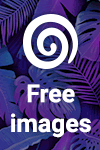My popular stock photography on Dreamstime

When it comes to lighting, it's a personal choice. Are you a natural-light photog or like the control of studio lighting? For microstock, both are absolutely fine and both are used.
I'm a natural-light gal myself. If it's a fast grab shot where I have no say over the time of day or lighting conditions, I'll do my best to control the light for the best shot. If I'm working indoors using window light, I will usually use reflectors to even out the overall lighting. And my favorite natural lighting source is a skylight. It usually offers very even, soft lighting which is perfect for photographing individual objects.
On occassion I do use a simple studio set-up with two halogen lamps shining through a white tent. This is good way to photograph still lifes. The "Blue Shell" was photographed using this versatile lighting set-up.
And then there is "digital" lighting or manipulating the image using the rendering tool in Photoshop. I often pop a little light onto my subject, add a back-light or sometimes even a lens flare to the image. (Take a look at the photo in my portfolio at the top of this blog entitled "A World Thirsting". The lense flare on the bowl of water was added using Photoshop.) This is just one more thing in your bag of tricks that you can use to create exceptional photos.
Of course, it's all up to you and your natural feel for lighting. I was trained in studio lighting and spent 10 years in a dark room hiding behind big softboxes. Now I love the ease and portability of digital photography and using natural light to illuminate my subjects. If you're not sure about how to do more complicated lighting, pick up a book or take a class. You'll be surprised how far a little knowledge can go.
Labels: lighting photography, microstock photography, natural lighting, studio lighting




